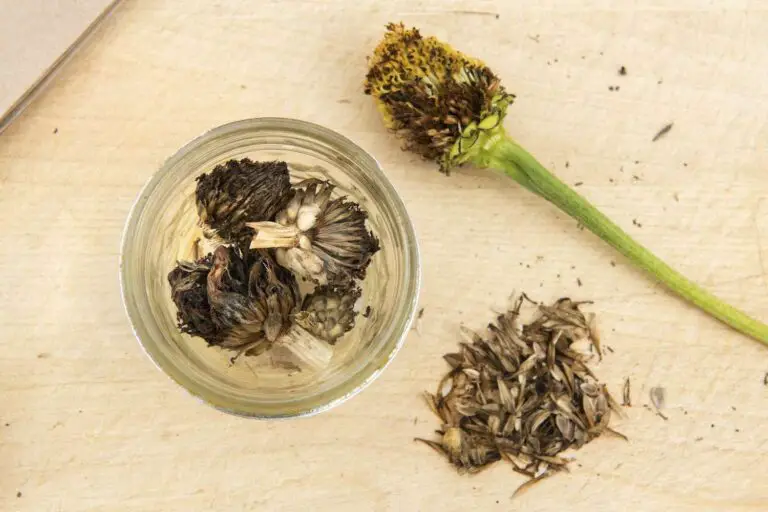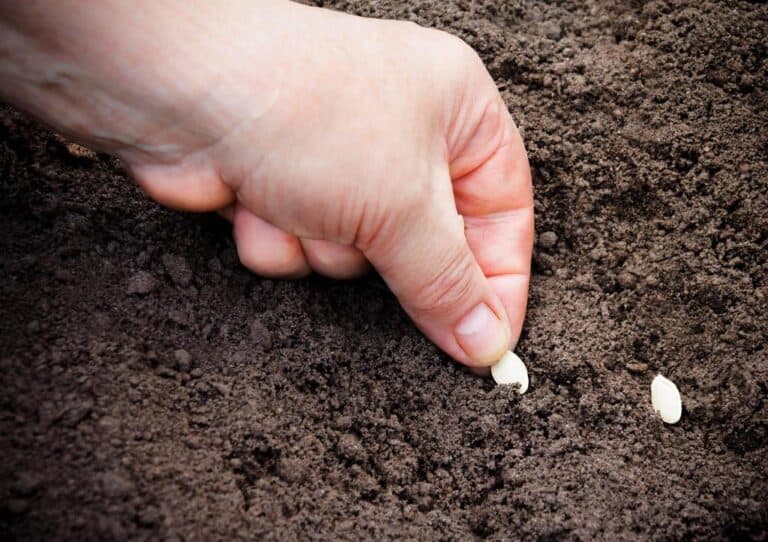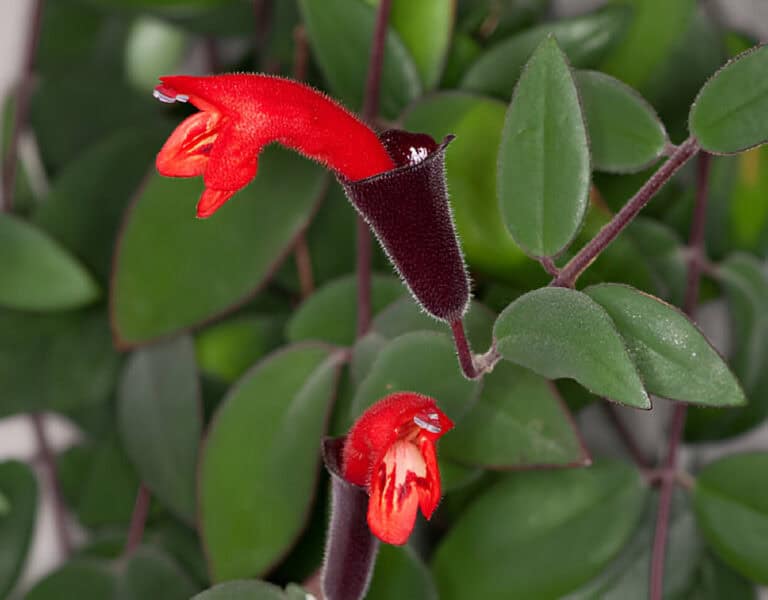Can You Replant Lettuce from the Grocery Store? Tips and Tricks

Have you ever wondered if you could extend the shelf life of your groceries beyond the kitchen? Replanting lettuce from the grocery store is not only possible but can also be a rewarding experience for home gardeners.
Imagine turning leftover lettuce scraps into a thriving garden of fresh greens right at home! In this article, we’ll look at the steps and methods for replanting store-bought lettuce.
This guide will walk you through the steps, tips, and tricks to successfully grow your own lettuce from store-bought leaves. Whether you’re a gardening novice or a seasoned green thumb, replanting lettuce can be a fun and rewarding experience.
Why Replant Lettuce?

Replanting lettuce can be a rewarding and sustainable practice. It offers many benefits for both new and seasoned gardeners. By replanting lettuce from the grocery store, you not only get to enjoy fresh greens for a longer period but also save money on your grocery bill.
Replanting lettuce from the grocery store has several benefits:
- Sustainability: Reducing waste by regrowing lettuce you might otherwise discard.
- Cost-Effective: Saving money on grocery bills by growing your own fresh lettuce.
- Freshness: Having a continuous supply of fresh, home-grown lettuce.
- Educational: Learning about plant growth and gardening techniques.
Choosing the Right Lettuce
Not all lettuce varieties are ideal for replanting, but many common types can regrow effectively. Here are some popular choices:
- Romaine: Known for its sturdy leaves and crisp texture, romaine lettuce is a favorite for regrowing.
- Butterhead: Soft and tender, butterhead varieties like Boston or Bibb are also suitable for replanting.
- Leaf Lettuce: Varieties such as red or green leaf lettuce can regrow quickly and easily.
Table: Lettuce Varieties for Replanting
| Variety | Characteristics | Ideal Growing Conditions |
| Romaine | Sturdy leaves, crisp texture | Full sun, well-drained soil |
| Butterhead | Soft, tender leaves | Partial shade, moist soil |
| Leaf Lettuce | Quick-growing, variety of colors | Full sun, regular watering |
Choosing the Right Growing Medium to Replant Lettuce from the Grocery Store
Choosing the right soil to replant store-bought lettuce is crucial. It ensures healthy growth and a good harvest. One of the key decisions you’ll need to make is whether to use soil or hydroponics.
Soil is the traditional choice. It provides a natural environment rich in nutrients and beneficial microorganisms. Hydroponics offers a controlled, soilless method. It can lead to faster growth and higher yields. Each method has its pros and cons; soil is often easier for beginners and mimics natural conditions, but it can harbor pests and diseases.
Hydroponics, on the other hand, requires a more precise setup and monitoring but reduces the risk of soil-borne issues.
When opting for soil, selecting the right type is essential. Use a loose, well-draining mix. It should have components like peat moss, compost, and perlite. They enhance aeration and moisture retention. This mix ensures that lettuce roots can reach the needed nutrients and oxygen. This mix promotes robust growth.
For those choosing hydroponics, a nutrient-rich solution is tailored for leafy greens. It has the elements required for lettuce to thrive without soil.
Read: Vertical and Horizontal Hydroponic Farming: What Is the Difference?
Choosing the Right Growing Medium to Replant Lettuce from the Grocery Store
Choosing the right soil to replant store-bought lettuce is crucial. It ensures healthy growth and a good harvest. One of the key decisions you’ll need to make is whether to use soil or hydroponics.
Soil is the traditional choice. It provides a natural environment rich in nutrients and beneficial microorganisms. Hydroponics offers a controlled, soilless method. It can lead to faster growth and higher yields. Each method has its pros and cons; soil is often easier for beginners and mimics natural conditions, but it can harbor pests and diseases.
Hydroponics, on the other hand, requires a more precise setup and monitoring but reduces the risk of soil-borne issues.
When opting for soil, selecting the right type is essential. Use a loose, well-draining mix. It should have components like peat moss, compost, and perlite. They enhance aeration and moisture retention. This mix ensures that lettuce roots can reach the needed nutrients and oxygen. This mix promotes robust growth.
For those choosing hydroponics, a nutrient-rich solution is tailored for leafy greens. It has the elements required for lettuce to thrive without soil.
Preparing to Replant Lettuce
Step-by-Step Guide
- Selecting the Lettuce: Choose fresh, healthy lettuce with intact cores. Avoid leaves that are wilted or damaged.
- Cutting the Leaves: Cut the leaves about 1-2 inches above the base. You’ll need this base for regrowing.
- Preparing the Water: Fill a shallow bowl with about an inch of water.
- Placing the Base: Place the lettuce base in the water, cut side up.
List: Steps for Preparing Lettuce for Replanting
- Select fresh lettuce with intact cores.
- Cut leaves 1-2 inches above the base.
- Fill a shallow bowl with water.
- Place the base in the water, cut side up.
Growing Lettuce from the Base
Initial Water Phase
- Location: Place the bowl in a sunny spot, like a windowsill.
- Water Maintenance: Change the water every 1-2 days to keep it fresh.
- Observation: After a few days, you should see new leaves sprouting from the center and roots forming at the base.
Transition to Soil
- Preparing the Pot: Once roots are about 1-2 inches long, it’s time to plant the lettuce in soil. Choose a pot with good drainage and fill it with a high-quality potting mix.
- Planting: Make a small hole in the soil and place the rooted lettuce base into it. Cover the roots with soil, but leave the new leaves exposed.
- Watering: Water the soil thoroughly, but avoid waterlogging.
Table: Transitioning Lettuce from Water to Soil
| Step | Action |
| Roots Formation | Wait for roots to reach 1-2 inches |
| Preparing the Pot | Use a pot with good drainage, fill with soil |
| Planting | Place lettuce base in soil, cover roots |
| Watering | Water thoroughly, avoid waterlogging |
Caring for Your Replanted Lettuce
Watering
Lettuce needs consistent moisture to grow well. Water the plants regularly, ensuring the soil remains moist but not soggy. In hot weather, you might need to water more frequently.
Fertilizing
To promote healthy growth, consider using a balanced, water-soluble fertilizer every few weeks. Avoid over-fertilizing, as too much can lead to lush foliage but poor flavor.
Pest Control
Lettuce can be prone to pests such as aphids and slugs. Use natural pest control methods like neem oil or diatomaceous earth to keep your plants healthy.
Harvesting Your Lettuce
When to Harvest
Lettuce can be harvested once the leaves reach the desired size. For a continuous supply, use the “cut-and-come-again” method: cut the outer leaves and leave the inner ones to keep growing.
How to Harvest
Use clean, sharp scissors to cut the leaves about an inch above the base. This encourages new growth and ensures you have a steady supply of fresh lettuce.
List: Steps for Harvesting Lettuce
- Wait until leaves reach desired size.
- Use clean scissors to cut outer leaves.
- Leave inner leaves to continue growing.
- Harvest regularly for a continuous supply.
Troubleshooting Common Issues
Leggy Growth
If your lettuce plants become tall and spindly, they may not be getting enough light. Move them to a sunnier spot or use a grow light to ensure they receive adequate sunlight.
Yellowing Leaves
Yellow leaves can be a sign of overwatering or nutrient deficiency. Adjust your watering schedule and consider using a balanced fertilizer to address the issue.
Slow Growth
Slow growth can occur due to low temperatures or poor soil quality. Ensure your lettuce is in a warm spot and use high-quality potting mix to encourage healthy growth.
Enjoying Your Home-Grown Lettuce
Replanting lettuce from the grocery store not only provides fresh produce but also adds a touch of greenery to your home. Whether you use it in salads, sandwiches, or as a garnish, home-grown lettuce offers superior taste and freshness. Plus, the satisfaction of growing your own food is unparalleled.
Creative Uses for Home-Grown Lettuce
- Salads: Create fresh, vibrant salads with your home-grown lettuce.
- Sandwiches: Add a crisp, healthy layer to your sandwiches and wraps.
- Garnishes: Use as a garnish for soups, tacos, and more.
List: Benefits of Home-Grown Lettuce
- Superior taste and freshness.
- Reduced grocery costs.
- Sustainable and environmentally friendly.
- Educational and enjoyable gardening experience.
Conclusion
Replanting lettuce from the grocery store is a simple and rewarding way to enjoy fresh greens while reducing waste and saving money. By following these tips and tricks, you can grow your own lettuce at home. This will add beauty and sustainability to your gardening.
Whether you’re a beginner or an experienced gardener, replanting lettuce is a great way to enjoy the fruits (or leaves) of your labor. Happy gardening!






